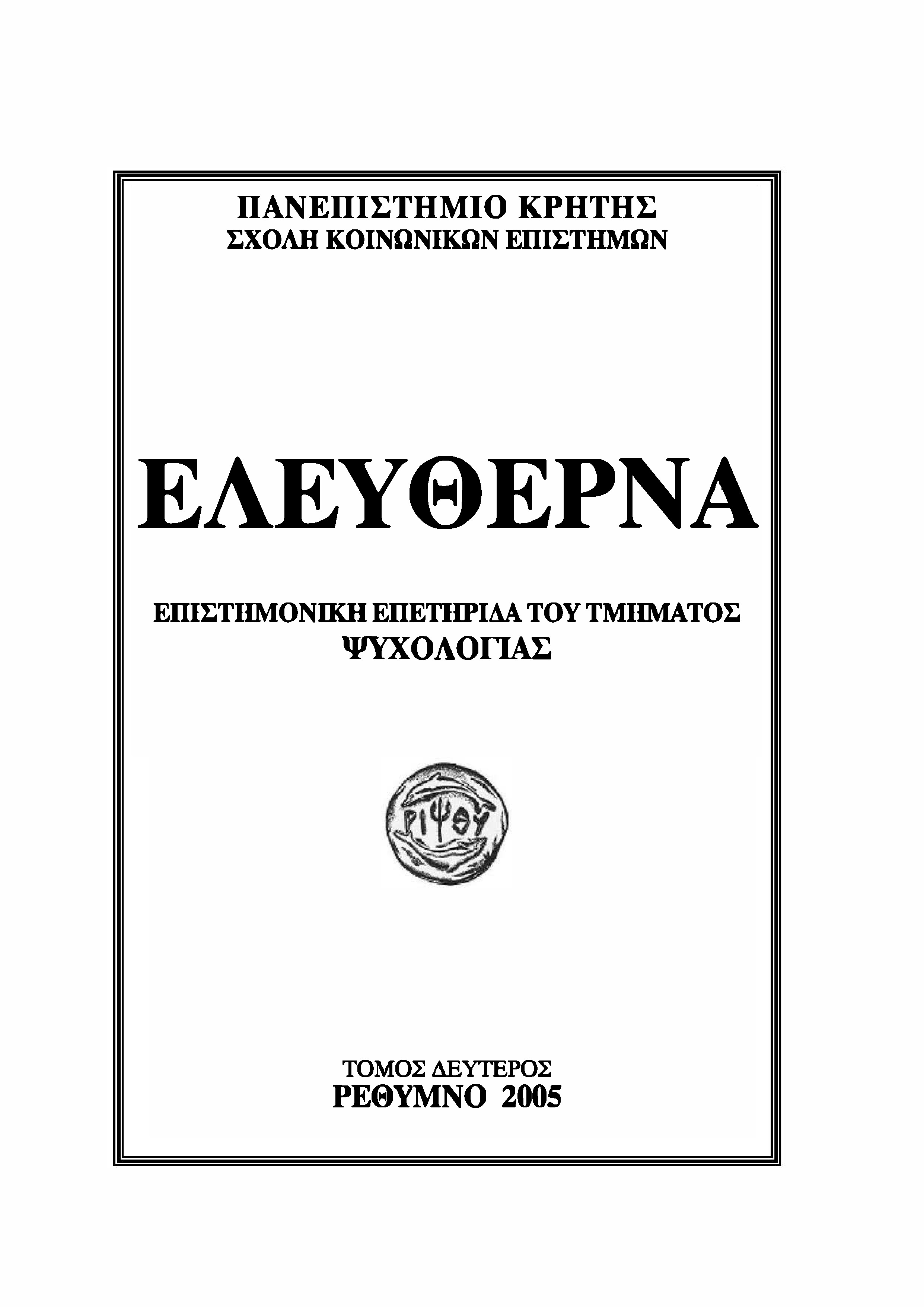Carrier decision making: Perceived career barriers during adolescence concerning the process of career decision making and possible interfering factors
DOI:
https://doi.org/10.26248/eleutherna.v2i0.152Keywords:
Career Aspirations, Expectations, Career BarriersAbstract
The goal of the present study was to investigate the possible relationships between career aspirations, career outcome expectations and perceived career barriers of middle adolescents during their process of career decision making. The hypotheses were that: a) there is a negative relationship between perceived career barriers and career aspirations I career outcome expectations concerning future career, b) adolescents with part-time work experience perceive more career barriers than adolescents without part-time work experience, c) adolescents with
the career as a future choice type perceive more career aspirations than adolescents with the work as a future choice type and d) adolescents with the work as a future choice type perceive more career barriers than adolescents with the career as a future choice type. The sample included 310 middle-adolescencestudents, 150 boys and 160 girls of ninth and tenth grade of junior high and high school respectively. The career aspirations and the career outcome expectations were measured by the Perceived Career Aspirations inventory and the Perceived
Career Outcome Expectations Questionnaire, while the career barriers were measured by the Perceived Career Barriers Questionnaire, all the above constructed by the researchers for the purposes of the study. The results are discussed in terms of application of research findings on the planning of career prevention and intervention programs in school setting.
Downloads
Published
How to Cite
Issue
Section
License
This work is licensed under a Creative Commons License Attribution-NonCommercial-ShareAlike 4.0 International (CC BY-NC-SA 4.0).
Under this license EJPBS provides immediate open access to its content on the principle that making research freely available to the public supports a greater global exchange of knowledge.


